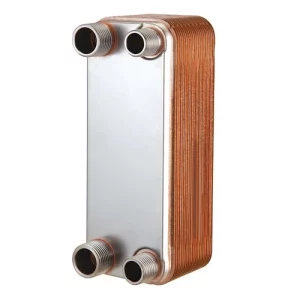Our brazed plate heat exchanger offers compact design and high thermal efficiency. Engineered for durability and reliability, it excels in demanding industrial applications, providing effective heat transfer in a space-saving format.
what truly sets us apart is our ability to design and produce tailor-made heat exchangers, to perfectly match your specific needs.
for more information and specification you can contact with us.

